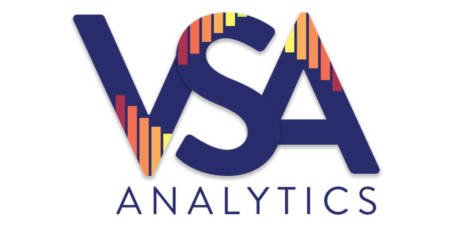If you work in institutional research, you know better than anyone that the data reporting never ends. This is especially true when it comes to IPEDS reporting.
While it may seem like a hassle, the information you submit to IPEDS is destined to become a representation of your institution — making it one of the most important public relations, marketing and sales assets you have.
Read on to dive into IPEDS topics including:
Who is Required to Submit IPEDS?
The 6 Steps of IPEDS Data Collection
How Institutions Participate in the IPEDS Process
What is IPEDS?
The Integrated Postsecondary Education Data System (IPEDS) is an annual collection of surveys conducted by the U.S. Department of Education’s National Center for Education Statistics (NCES).
Under Title IV of the Higher Education Act of 1965, institutions that participate in federal student financial aid programs must submit data to IPEDS. Some of the data submitted relates to enrollments, program completions, finances, faculty and staff, graduation rates, financial aid and institutional costs.
What is the NCES?
The National Center for Education Statistics (NCES) is part of the U.S. Department of Education and the Institute of Education Sciences, and is “the primary federal entity for collecting and analyzing data related to education in the U.S. and other nations.” With these responsibilities, the NCES is in charge of conducting all annual IPEDS surveys with the help of RTI International.
What is RTI International?
For the last 20 years, the independent nonprofit research institute RTI International has run the database behind IPEDS. The organization is in charge of collecting all institutional-level data and has developed data collection web applications and training programs that are specific to IPEDS. RTI also provides customer and technical support for institutions submitting IPEDS data.
Why is IPEDS Important?
The purpose of IPEDS is to gather and analyze data related to postsecondary education in the U.S. This includes information like the number of enrolled students, employed faculty members, earned degrees and various other factors.
According to the NCES, IPEDS data is used by the following agencies:
- Congress
- Media
- Federal Agencies
- State Governments
- Institutions
- Professional Associations
- Private Businesses
- Students and Parents
Other NCES postsecondary surveys — some of which include the National Postsecondary Student Aid Study and the National Survey of Postsecondary Faculty — use IPEDS data to frame their institutional samplings. The latest IPEDS data is also aggregated into College Navigator to provide information that the public can use.
The Types of IPEDS Surveys
IPEDS currently includes 12 survey components that are broken up into three reporting periods (fall, winter and spring). However, this number can change — Outcome Measures were only recently added.
NCES explains the data components of each survey as follows:
| Fall Survey Components | |
| Institutional Characteristics | The foundation of IPEDS, this survey includes information related to basic institutional contacts, student services, tuition and fees, type of calendar system, programs offers and other defining characteristics. |
| Completions | Includes the number of students who complete a postsecondary program and the number of postsecondary awards earned. Data is broken down by field of study, award level and recipient demographics. |
| 12-Month Enrollment | Data in this survey includes unduplicated headcounts by level of student, race/ethnicity, and gender; the total hours students are engaged in instruction; and full-time equivalent (FTE) enrollment. |
| Winter Survey Components | |
| Outcome Measures | The outcomes of first-time, full-time, part-time attending and transfer-in students are reported by degree-granting institutions. |
| Admissions | Institutions that don’t have an open admissions policy for first-time degree/certificate-seeking students must provide basic information including admissions considerations, acceptance rates, admission yields and SAT/ACT scores. |
| Graduation Rates (200%) | Includes the number of full-time, first-time degree or certificate-seeking students in a particular year, and the number of students completing a program within a time period equal to 2x (200%) the normal period of time.
With this survey, institutions are better able to comply with the reporting requirements of the Student Right-to-Know Act and the Higher Education Act. |
| Graduation Rates | Data collected includes the number of students who transferred to other schools, full-time, first-time degree and certificate-seeking undergraduate students and those who complete a program in a time period equal to 1.5x (150%) the typical time period.
This survey also helps institutions comply with the reporting requirements of the Student Right-to-Know Act and the Higher Education Act. |
| Student Financial Aid | This survey collects the counts of undergraduate students awarded aid and aid amounts, full-time, first-time undergraduate students awarded aid and aid amounts and undergraduate and graduate students receiving military education benefits. |
| Spring Survey Components | |
| Fall Enrollment | Data includes full- and part-time students enrolled in the fall, broken down by level, race/ethnicity and gender. This survey also includes student ages, first-time retention rates, student-to-faculty ratio and enrollments in distance learning programs.
This is sometimes called a “snapshot” count, since students are counted at a specific fall census date. |
| Finance | Included here is information that provides context for understanding the resources and costs required to provide postsecondary education, and its contribution to the gross national product.
Data includes revenues by source (tuition and fees, government grants and contracts, etc.), expenses by function (instruction, research, academic support, etc.), assets and liabilities, and scholarships and fellowships. |
| Human Resources | Measures the number and type of staff supporting postsecondary education. Data is broken down by employees’ primary occupational activity, faculty status and full- or part-time status. |
| Academic Libraries | Libraries at degree-granting institutions report on counts of books, media, serials and database collections in physical and digital forms; physical circulation and digital use; interlibrary loan services; and library expenditures. |
Who is Required to Submit to IPEDS?
As stated in Title IV of the Higher Education Act (HEA) of 1965, students can receive financial assistance through federal programs like Pell Grants and student loans. In order for an institution to offer their students these federal financial programs, completion of IPEDS surveys is required.
Accurate, timely reporting is a non-negotiable requirement for IPEDS. Failure to respond to one or more IPEDS surveys in the same collection year can result in a fine of up to $57,317 for each violation, as stated in Title IV of the HEA.
Today, over 7,500 U.S. colleges and universities submit IPEDS surveys every year, making it the most comprehensive collection of higher education data. These institutions include:
- Community and Technical Colleges
- Research Universities
- State Colleges and Universities
- Private Religious Institutions
- Liberal Arts Colleges
- For-Profit Institutions
- Non-Degree-Granting Institutions
Survey Completion Responsibilities
Institutional research departments typically spearhead IPEDS reporting requirements, and work with the appropriate department heads to submit the necessary information.
Here’s a look at the departments that are responsible for each survey component:
- Admissions/Registrar’s Office
Institutional Characteristics, Completions, Graduation Rates, 200% Graduation Rates, Outcome Measures, Admissions, 12-Month Enrollment and Fall Enrollment.
- Financial Aid/Finance Office
Finance and Student Financial Aid
- HR Department
Human Resources
- Head Librarian/Library Staff
Academic Libraries
The 6 Steps of IPEDS Data Collection
The NCES details the six steps of the IPEDS collection process here, but below is a quick overview of the process:
Step 1: Institutions Submit Their Data
All IPEDS survey data is submitted via a web-based application known as the IPEDS Data Collection System (DCS). The data can be manually entered or uploaded using a fixed file. The person who is responsible for uploading the data is known as the “keyholder.”
Step 2: Data Review
The DCS reviews and edits data, and creates a list of issues that the keyholder must resolve before a survey can be locked.
Step 3: Data Locking
When all the necessary edits have been made to the data, the keyholder locks the survey. This indicates that all data is complete and correct.
Step 4: Data Migration
The Collection Level Data Center copies all data from locked surveys. Here, respondents can view their own data and data from other institutions that have already migrated to the Collection Level Data Center.
Step 5: Data Verification
Once migrated, data is put through quality control processes to verify that edits have been made, migration is successful and any anomalies are supplemented by valid explanations.
Step 6: Public Release
IPEDS data is released to the public.
How Institutions Participate in the IPEDS Reporting Process
Since IPEDS does not allow deadline extensions, your submission process needs to be airtight.
If you’re using a manual upload process, there will be a higher chance of human error since the keyholder will be responsible for key entry of all data. In this instance, implementing a methodical quality assessment of all data before it’s uploaded to IPEDS is a must.
Most institutions upload a file of their data. If your institution has a data analytics platform, the IPEDS reporting process can be streamlined by a data extraction tool that will download the data into an IPEDS-accepted file format and then submit.
A data analytics tool like Precision Campus can be used for reporting requirements like IPEDS. A report can be designed to extract the correct fields for reporting each of the IPEDS surveys using our interactive, cloud-based dashboard. Users can validate the data using the dashboard before submitting the files.
IPEDS Reporting FAQs
Q: What institutions have to submit to IPEDS?
A: If your institution is eligible for Title IV funding (Pell Grants or federal student loans), completing and submitting IPEDS surveys is required.
Q: When are the data collection periods?
A: The specific collection dates will vary depending on the year, but you can expect to submit surveys in the fall, winter and spring. Visit the NCES website to see upcoming dates.
Q: What is imputation?
A: When institutions don’t submit certain sections of data to IPEDS, methods of imputation are performed when the data is tabulated and reported. This is a process of filling in the blanks, either for an entire survey or for specific sections that were not completed. There are several imputation methods applied to data, including nearest neighbor, group median, ratio adjustment and carry forward. The methods can change every year. For more information on what these entail, check out the latest IPEDS Methodology Report.
Q: Can my institution get an extension?
A: Unfortunately, IPEDS does not allow deadline extensions.


